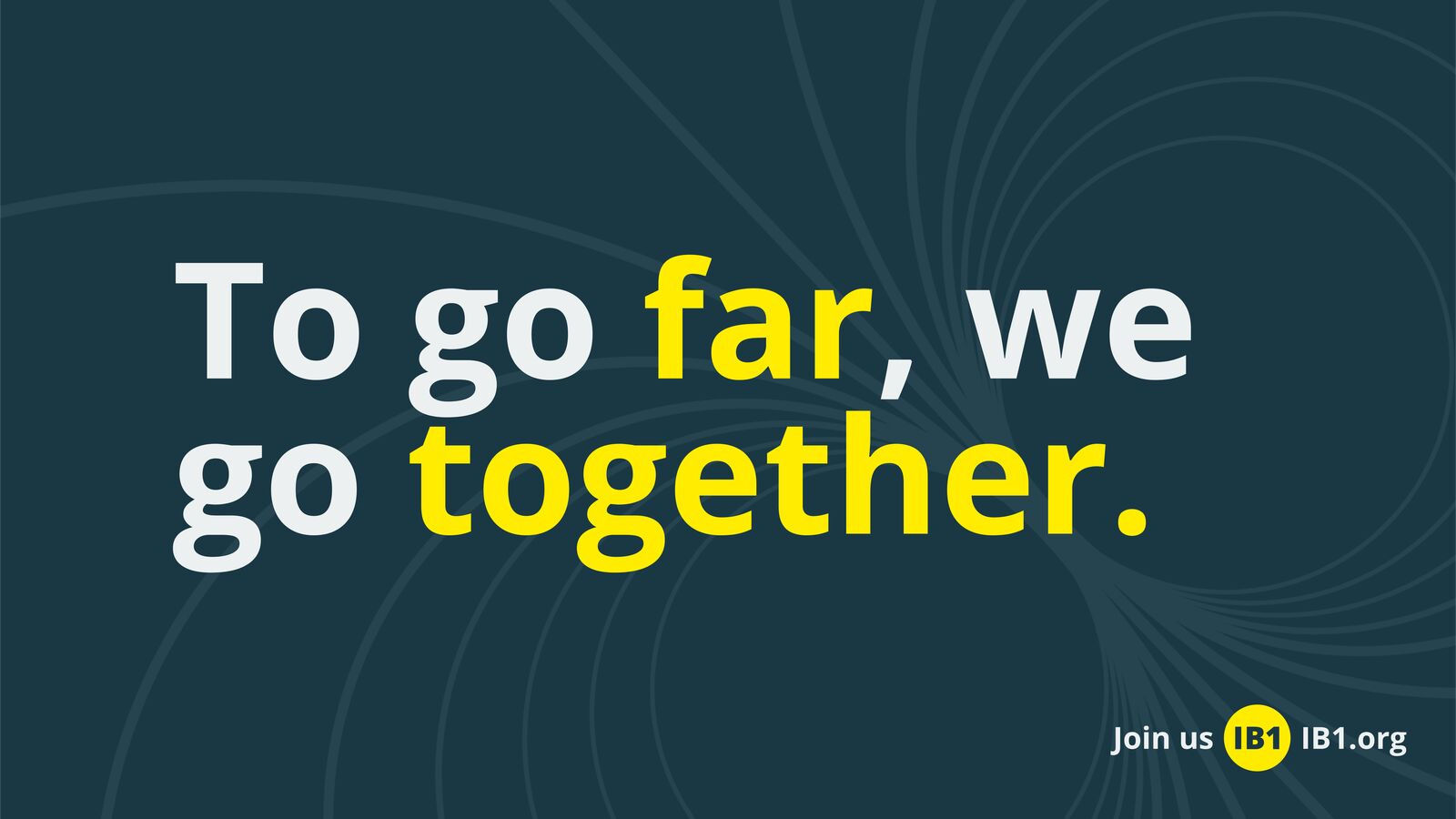V2025-02-25

Icebreaker One (IB1) is a UK-headquartered, neutral, public benefit non-profit company. It works to enable trusted, interoperable data sharing for private sector, public and environmental benefit. It supports the development of data infrastructure by designing and operationalising governance, trust frameworks, and policy mechanisms across sectors. Its work is designed to ensure that data is leveraged as a key asset to drive economic growth, policy effectiveness and net zero innovation.
Huge amounts of data are being generated worldwide: from our financial systems to energy, water, transport, our built world and our environment.
To make the most of its value, and reduce risks, we need to connect it with those who need it and put in place the right protections for everyone. This supports net-zero investment decisions by connecting assurable real economy & financial economy data between organisations and between sectors. Enabling low friction data sharing can drive innovation, efficiencies and unlock economy value for everyone.
While there are many challenges, we simplify the process by focussing on business-driven use cases that can scale efficiently and securely. We help countries, sectors and organisations design and implement data sharing schemes, saving time and money through multilateral approaches, removing cost and friction from processes and helping you to unlock business value that can scale.
Collaborate on the rules, compete in the game
IB1 enables:
1. The IB1 Constellation: connect with an expert network of professionals
2. Icebreaking: engage in governance-led discovery and design of Schemes (data sharing rulebooks)
3. Trust Services: implement Scheme(s) in your business, at market scale
These are operated for and on behalf of Members to meet the needs of open, competitive markets, while balancing public and national interests. IB1 helps provide policy and standards leadership, engaging with regulators, government, and industry to shape policy and standards that underpin digital markets.
“IB1 is always moving theory into practice”, Adrian Philpott
If you would like to get in touch, please email partners@ib1.org or you can join today.
This remainder of this page goes into some depth [5 min read] on:
- The process for market-scale governance
- Which sectors this can apply to
- Why ‘connect don’t collect’ helps create value
- Why IB1 non-profit services aim do as little as possible to help support the market
If you would like to watch short examples, please see our 2-minute Perseus video.
1. Market-scale governance for secure, trusted data sharing
Making data work harder to deliver net zero.
Data is key to good decision-making for reaching net zero. Huge volumes of relevant data are created every day by individuals, businesses, and governments. Right now, it’s too hard to find and access the data we need. Powerful barriers – cultural, technical, legal, commercial – stop it from being shared. That means it is massively under-exploited and often hidden from view.
We break down these barriers. Our goal is to make it easy to find, access, and trust the data we need to reach net zero.
IB1 is a non-profit facilitator that helps to enable data sharing at scale. Based on a mandate from the market, we help organisations convene, co-design and implement data sharing Schemes using Trust Services. Collaborating on the rules makes it easier for everyone to share data with each other, enables scalable, trusted relationships, unlocking efficiencies, innovation and competition.
Our Icebreaking process helps create rulebooks (‘Schemes’) that organisations can use to share data. Using Trust Services, we help implement these rules in ways both humans and machines can understand.
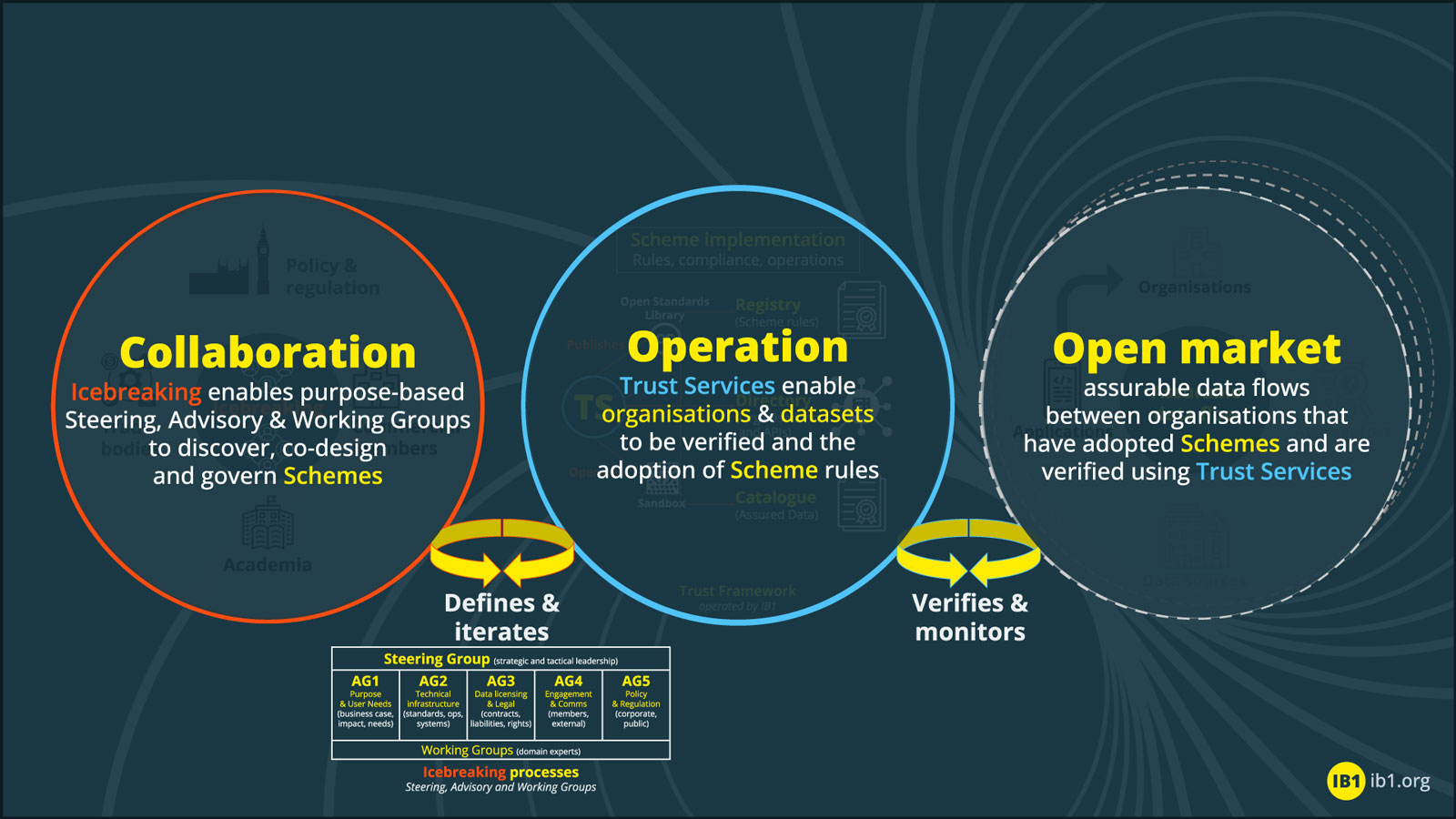
We deliver two services that enable data sharing at sector, national and international scales.
- Icebreaking — collaborative definition of the rules
The first step is to collaboratively define what, why and how data can be shared. Our Icebreaking process applies a robust governance approach that brings organisations together to co-design and define the rules of data sharing. The rulebook is called a Scheme and includes definitions of use case(s) and the legal, technical, policy and communications approaches that support implementation. - Trust Services — implementation of the rules across markets and organisations
The second step is a system that codifies the rules and controls how they are followed. This uses a Trust Framework, supporting services & tools (e.g. assurance, sensitivity analysis). This enables market participants to automate their data sharing within a robust legal and technical framework. We also can aid data discovery with search and metadata cataloging services such as Open Net Zero https://opennetzero.org (note, this is just one open source example of what’s possible when data infrastructure is done well).
These services never see, store or process the data: the rules are centralised, the data is decentralised (shared directly peer-to-peer). All services are ongoing processes: the rules of data sharing evolve and change over time.
Trust Frameworks provide ongoing monitoring, reporting and verification of Scheme implementations at market scale, helping Members implement Assurance and assess Data Sensitivity.
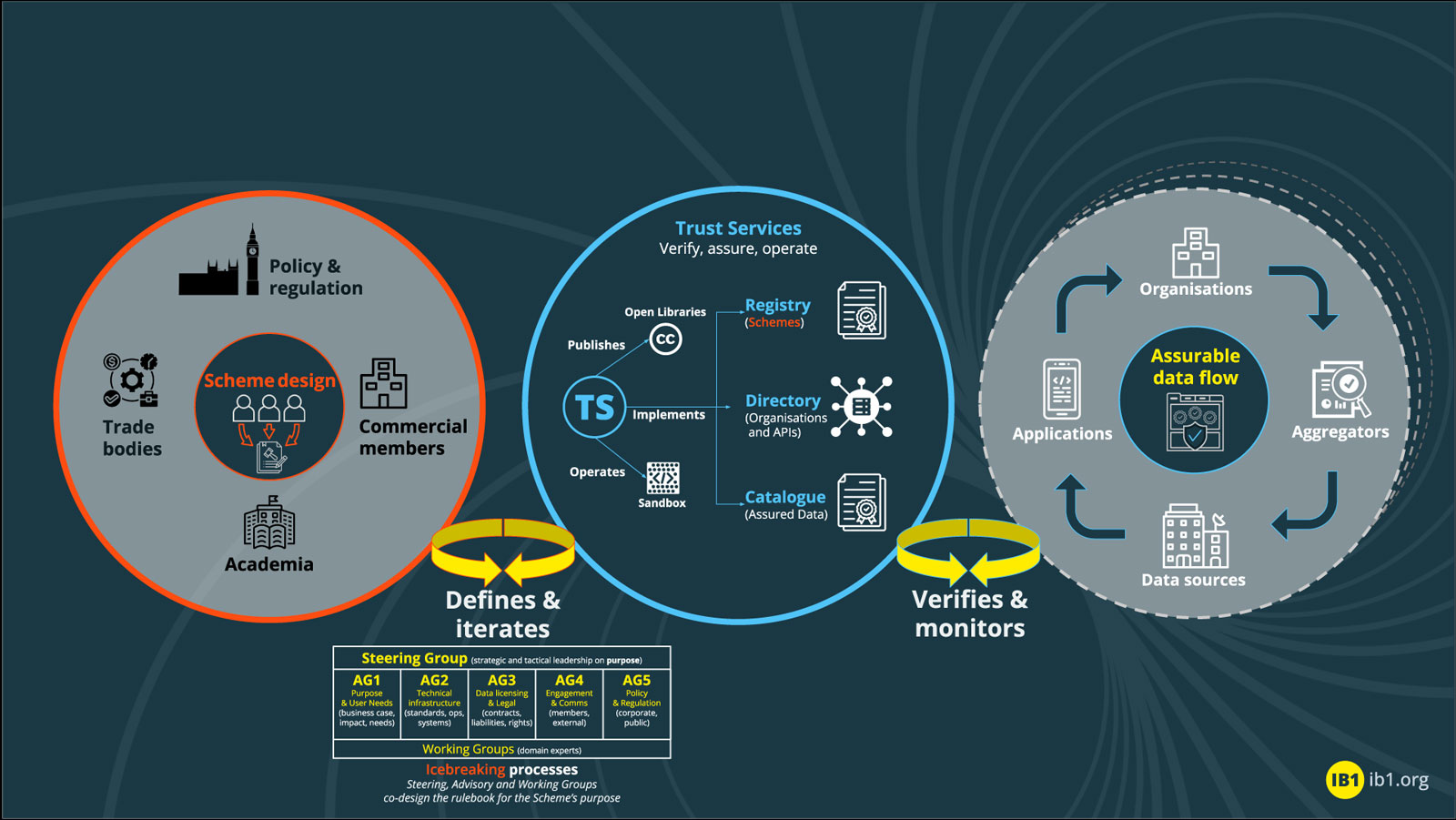
IB1 is a non-profit. It operates a membership model to fund and deliver services. An overview of it use of funds is also public and subject to scrutiny by independent bodies (e.g. grant monitoring officers and programme delivery oversight committees) as part of its transparent governance processes.
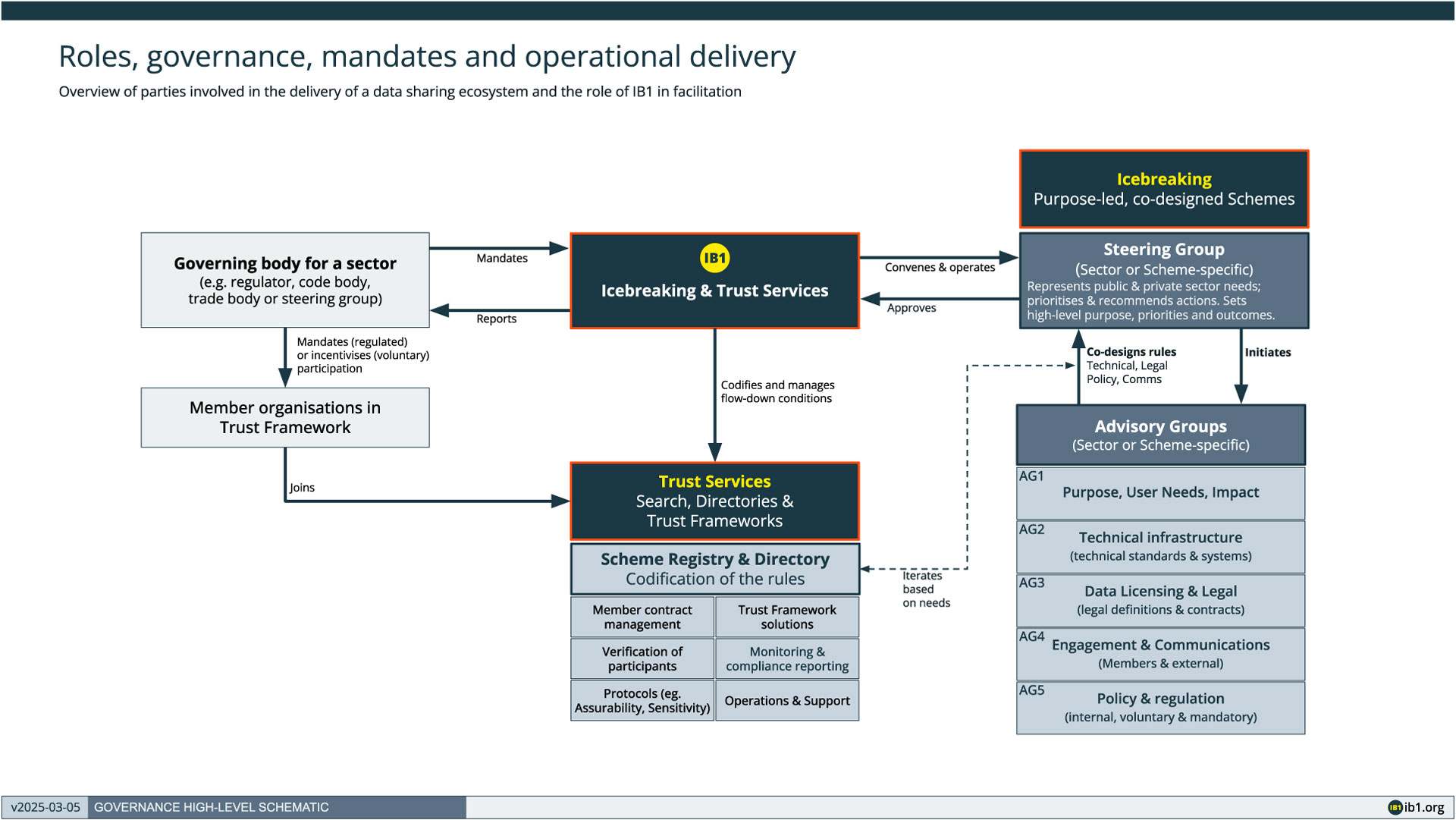
Video introduction (v2024-04-07)
(click to skip to a section)
- Scene setting (from 41s): how can we think about data?
- Connect don’t collect (from 2m12s): how policy, the real economy and financial economy connect
- Can we unlock £100B? (from 4m58s): example of a live programme
- Collective action (from 11m58s): how data sharing governance can help humans and machines collaborate
- Get involved (from 16m24s): be an Icebreaker
2. Which sectors can this apply to?
Our approach is sector-independent. We work with you to design and operate solutions for any one sector, or across sectors. For example, smart energy and water solutions need collaboration and data sharing between sectors. As each sector also has its own needs, sector-specific Trust Frameworks and Schemes can address their particular rules too. The rules address the commercial, consumer, legal, regulatory, and technical needs of that sector.
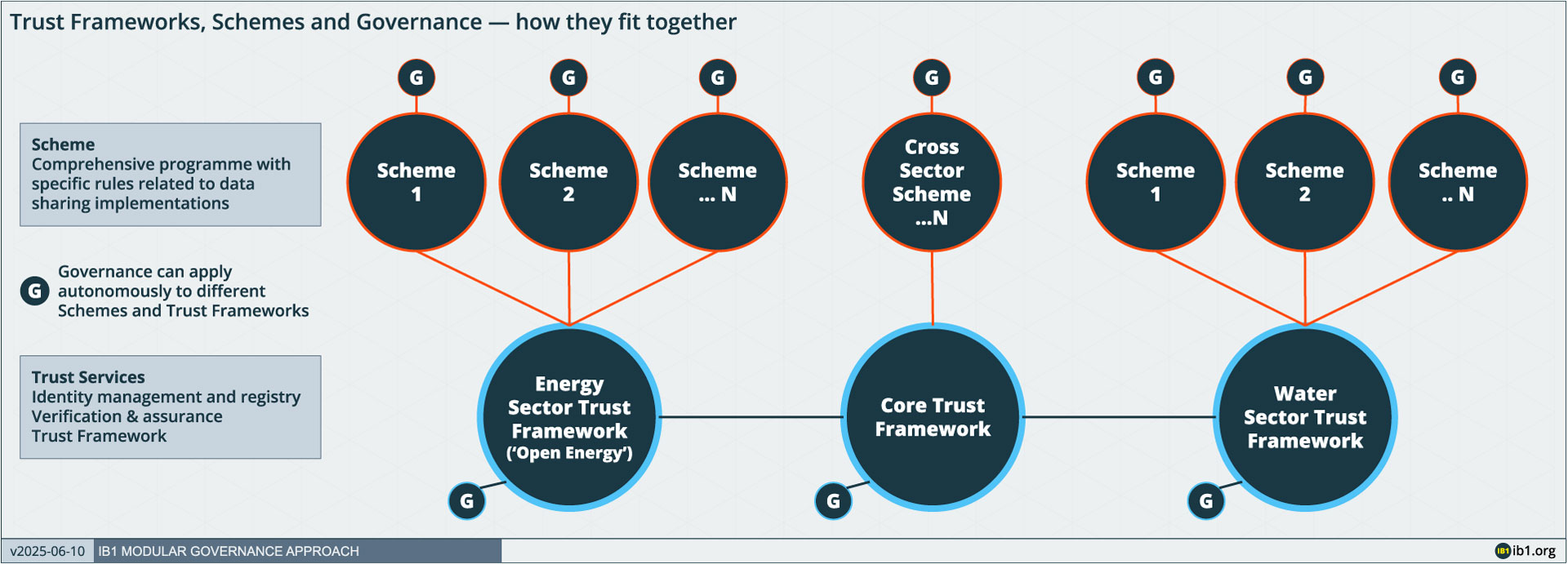
We have deployed solutions for sectors, including:
- Energy Sector Trust Framework — leading in the UK with Open Energy
- Water Sector Trust Framework — with the UK Stream consortium as the pioneering Scheme
- Cross-sector/Core Trust Framework — with Perseus programme as an exemplar
We are exploring new work across the built world, transport and agriculture with partners to unlock opportunities across the economy. All programmes are connected to the financial sector.
In all of our work, we ensure systems-wide interoperability: ensuring that the right foundations are laid to enable data to flow from wherever it is stored, to whomever needs it.
As detailed in recommendations that now underpin Smart Data, all systems-level governance must address:
- Systems designs that are anchored around users and use cases. These must include, but are not limited to addressing: fair value exchange, risk and risk mitigations, security, liability, legal and technical interoperability.
- Openly licensed standards, shared and common processes, principles and practice are made compulsory for cohesion and interoperability across markets.
- Federation: structures that enable multi-stakeholder Scheme design and that can ‘hive up’ lessons learned from implementations into central frameworks, governance and funding structures. These must also enable each sector to catalyse their own Implementation Entities that address sector-specific issues and cross-sector cohesion.
UK Smart Data legislation and Open Banking are good examples, which the IB1 team have also been instrumental in the creation of.
An important part of this architecture is that it must be adaptive to a rapidly changing landscape: there is no ‘endpoint’ to data innovation. The compulsion to adopt—and make accessible—open standards must continuous and work to a predictable cadence to enable commercial planning.
3. Why ‘connect don’t collect’?
Data must, of course, be collected for analysis. The key is that data is spread across millions of different systems, organisations and billions of sensors. Our approach harmonises the rules, standards and governance at the start (which will have to be done anyway). This is a cost-effective, secure and scalable process that can enable scale, security and proper controls.
Most initiatives we see start with tech and add governance later. This is, in our experience, high friction and high cost. It does not yield truly open markets that can scale in the same way as the open web does. There are more machines online than there are people on Earth.
This is especially true with climate impact, where we need to enable cross-sector, cross-border data sharing at an unprecedented scale. To address privacy, security and proprietary data needs, we must have a decentralized way of enabling (and blocking) data sharing.
We need to support an open market architecture.
The good news is that if we get that right, building centralized, specialist databases for analysis becomes easier, and open to many thousands of use cases, instead of a huge collection of siloes and monoliths. Connecting enables fluid, adaptive market innovation and competition, and reduces the brittleness of ‘big-data-first’ approaches.
4. Why IB1 Trust Frameworks do as little as possible
Learn more about designing data-sharing infrastructure
Data sharing at scale requires the separation of ‘the data’ from its governance and the technology used to host and transfer it. A critical design feature of a Trust Framework is that it does as little as possible. This balances the building of trust, while reducing transactional friction. The Trust Framework doesn’t define the rules, nor does it touch the underlying data, or know who the end users are. It just verifies that rules have been agreed and can enable their enforcement.
The approach has three elements:
- Co-design of the rules for data sharing (both technical and non-technical)
- Implementation of the rules in a machine-compatible and enforceable manner
- Infrastructure access via verified permission-based trust to enable data to be shared directly between organisations.
- From a data user’s perspective, they want to know ‘can I find data, access it and use it for this purpose?‘
- From a data provider’s perspective, they want to know ‘can users find my data, access and use it with the right permissions?‘.
Both want to know ‘can we [legally] trust each other, and what do we do if something goes wrong?‘

In the diagram above,
- On the left, humans come together to define rules (rights, standards, policies)
- In the middle, those rules are codified into a Trust Framework
- On the right, organisations (and their machines) can check they have agreed to the rules
In this diagram, we illustrate that this can include the explicit permission of an end user. The end user doesn’t need to be in the Trust Framework but they do want to know the organisations handling their data are in it – so they can have trust in the processes and mechanisms of redress if needed.
The Trust Framework also supports two other models of implementation: where data rights are predefined and don’t need user consent, and where usage rights are waived using an open data licence.
To summarise, there are three types of use-case:
- Open data from verified sources
- Shared data between members of the Trust Framework based on predefined access rules
- Shared data between members of the Trust Framework where permission of a data owner outside the Trust Framework is required.
Open banking is an example that is used by millions and generates £billions
By way of example, in Open Banking, a customer’s current account data can be shared directly from their online bank to an online accounting provider to automate the creation of a tax return. The bank and accounting solution are both in a Trust Framework which protects both of them, and the end customer. It is co-designed by industry and regulators and is implemented via an independent non-profit body. This independent body operates the Trust Framework. It never touches the user’s data, nor knows who the user is. It manages the trust relationship between the market actors and, as a regulated sector, can aid enforcement (e.g. excluding bad actors from the ecosystem).
Learn more
- Trust Frameworks: detailed narrative
- Icebreaking: A proven process for the collaborative design of Trust Frameworks
- Assurance: Building trust and confidence with clear assurance levels

